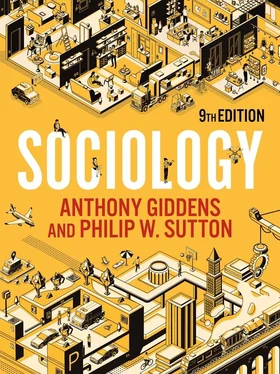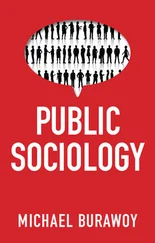USING YOUR SOCIOLOGICAL IMAGINATION
4.1 Newly industrializing countries
Some countries within the broad category of developing countries have embarked successfully on a rapid process of industrialization, which suggests that a country’s position within the development ranking can be changed. These countries have been described as newly industrializing countries (NICs), or newly industrializing economies (NIEs), and today they include Brazil, India, Malaysia, Mexico, the Philippines, South Africa, Thailand, Turkey and Indonesia (World Population Review 2020). These follow on from the earlier examples of four so-called Asian tigers (or dragons) of Hong Kong, South Korea, Singapore and Taiwan, which achieved annual rates of economic growth several times those of the Western industrial economies between the 1960s and the late 1990s (Sarel 1996).
The East Asian NICs have shown sustained levels of economic prosperity and are investing abroad as well as promoting growth at home. South Korea’s shipbuilding and electronics industries are among the world’s leaders, Singapore is becoming the major financial and commercial centre of South-East Asia, and Taiwan is an important presence in the manufacturing and electronics industries. Some economists argue that the reclassification of some previously poorer countries, and especially the rapid development of Brazil, Russia, India and China (the ‘BRIC’ countries), may even signal an emergent shift in the pattern of global power in favour of the developing world (O’Neill 2013). However, it is probably too early to draw this conclusion with much confidence.
Nonetheless, NICs have achieved something truly remarkable, transforming their economies over just three or four decades and moving from the status of low-income or developing to high-income, developed countries. And, even though the 2008 financial crisis and recession did lead to economic contraction, the early NICs weathered the recession and recovered more quickly than most longer-established developed economies. Singapore and Taiwan, for example, saw remarkable rises in GDP in 2010 of 14.5 per cent and 10 per cent, respectively (CIA 2012). What the NICs demonstrate is that sustained economic and social development is possible, though we should not expect all developing countries to follow the same path. The very different starting points and situations of developing countries mean that the NIC experience is unlikely to be repeated across developing countries in Africa.
Take one NIC from the list above and do your own research to find out when the country’s economy began to take off, which industries drove forward this development, how the national government promoted development, and how globalization facilitated rapid development.

Further discussion of the NICs can be found in chapter 6, ‘Global Inequality’.
Since 2010, the UN has combined national life expectancy at birth, years of schooling and gross national income per capita (GNI) into its Human Development Index (HDI) as the basis for assessing the general condition of countries around the world. The HDI divides countries into four development categories: very high, high, medium and low human development. Hence, the basic concept of ‘development’ remains central to this scheme. Again, although this may appear as a neutral method of classifying countries based on empirical data, not everyone agrees.

Chapter 6, ‘Global Inequality’, contains much more on the HDI measure and development issues.
It may be argued that there is still an inherent bias, as the developing countries are seen to be ‘developing’ towards the existing model presented by the industrialized, developed countries, thus privileging the latter’s form of ‘development’ over all possible alternatives. There is also no sense from this scheme that the lower average incomes, life expectancy levels and public spending on schooling in many developing countries is part of the continuing legacy of being actively underdeveloped while under colonial rule. The World Bank abandoned the developed/developing scheme in 2016, preferring a classification of countries based on income per capita – low income, lower-middle income, upper-middle income and high income – which allows for reclassification as national economies improve or decline. However, this move means that the revised scheme is based purely on economic criteria and does not take account of other indicators, such as those embedded within the HDI. At present, the basic developed/developing country contrast is still widely used in development studies work and among many NGOs and aid agencies.
Another alternative is to contrast the majority world with the minority world. This scheme reverses the perceived status of the developed and developing countries, reminding us that the majority of the world’s population actually lives in ‘developing’ countries and only a minority lives in the ‘developed’ world (Dodds 2018). It also makes clear in a very stark and simple way that, even in a supposedly postcolonial age, a minority continues to own and control the majority of global wealth to the disadvantage of most of the world’s population. In this way the distinction aims to institute a normative bias in favour of developing countries. So far, the majority/minority world contrast has not taken root, and the most recent, and still developing, way of discussing global inequalities and power relations is to contrast the Global South with the Global North. This approach is more overtly postcolonial in its aims than previous schemes.
From the seventeenth to the early twentieth century, Western countries used their overwhelming military power and technology to establish colonies in regions previously occupied by traditional societies. In some regions, such as North America, Australia and New Zealand, which were thinly populated by hunting and gathering groups, European colonists became the majority population. In other areas, including much of Asia, Africa and South America, local populations remained in the majority and lived under minority rule. Many countries in the Global South today are in areas of Asia, Africa and South America that faced colonial domination and rule.
The policy and practice of colonialism shaped the map of the world until the former colonies were able to break free and become independent countries in their own right. A few colonized regions gained independence quite early. Haiti, for instance, became the first autonomous black republic in 1804. The Spanish colonies in South America gained their freedom in 1810, while Brazil broke away from Portuguese rule in 1822. However, most colonized countries became independent states only after 1945, often following bloody anti-colonial struggles against Western colonists. In India, and a range of other Asian countries including Burma, Malaysia and Singapore, as well as those in Africa such as Kenya, Nigeria, Tanzania and Algeria, nationalist movements and popular uprisings were crucial in challenging the economic and military power of Western colonial regimes.
Generally, these countries are very different to those that existed before colonialism. Their political systems tend to be modelled on those first established in the West – that is to say, they are nation-states – and, while most of the population still lives in rural areas, many are experiencing a rapid process of urbanization. Similarly, agriculture remains the main economic activity in many countries, but crops are produced for sale in world markets rather than purely for local consumption. What is clear is that ‘developing countries’ are not ‘primitive’ societies that have simply ‘lagged behind’ the industrialized countries. Western colonialism systematically ‘underdeveloped’ these countries in order to plunder their resources, which, in turn, helped to generate rapid economic development in the West. Colonial regimes undermined the existing economic and social systems, leaving former colonies severely disadvantaged on independence.
Читать дальше













